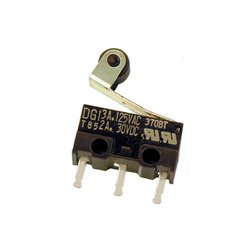The tightest N gauge Setrack curve presently produced by Peco is a first radius curve (228 mm radius).Getting to...
No products
Product successfully added to your shopping cart
There are 0 items in your cart. There is 1 item in your cart.
Search Tips
Christmas and New Year
We are dispatching orders every weekday apart from Christmas Day, Boxing Day and New Year's Day.
If you order is time critical, select next day delivery at checkout.
The shop in Sandown is closed from 25th December, reopening on 30th December.
What is the difference between a 3 pole and 5 pole motor?
If you have ever opened up a traditional brushed DC motor (the motor on older model railway locomotives), you would have been greeted with a solid outer casing with a component inside that spins around. A closer inspection of the bit that spins around will reveal what looks like a never-ending mass of fine copper-coloured wire infinitely coiling around and around some sort of framework.
This spinney component is called an armature, and despite appearances, the coiled wire is not one continuous length. There are in fact three separate coils (on a three-pole motor) or five separate coils (on a five-pole motor). When you turn your controller on, power is distributed to the sections of the coiled wire creating an electromagnet. In a magnetised state the coils are attracted to a couple of regular magnets positioned around the inner wall of the motor's casing and movement is created (the armature spins).
The coils of wire (known as the windings) are not constantly energised otherwise the forces of all the electro-magnets operating in unison would cancel each other out and the armature would not spin. The coils are energised in a specific sequence, one after the other so when one has pulled the armature around to as close to a magnet in the casing as it can, it disengages and the next coil takes over a bit like a relay.
Whether manufacturers use a three-pole or five-pole motor in their models is likely largely down to cost, but there could be performance considerations too. Most modellers will agree that five-pole motors offer better performance because each coil only has to move the armature a short distance before the next one takes over, therefore, it can be timed to take advantage of only the optimum pull of each magnet, whereas on a three-pole armature the coil would have to start attracting a fair distance from the casing's magnet potentially giving a poorer performance. However, five-pole motors require more space as there are more coils to squeeze onto the armature, this means that less coiled wire can be attached to each section of the armature, and less wire results in a weaker electromagnet being created so it's a fine balance which is best for a particular model.
One solution to this problem that some manufacturers have adopted is to install a stronger three pole motor coupled with a flywheel to help the armature through the weaker parts of the magnetic pull. This ultimately means that the motor doesn't speed up as fast but luckily, that is one side effect that most modellers desire.
Click here to receive the tips weekly in your mailbox. You can unsubscribe at any time.










